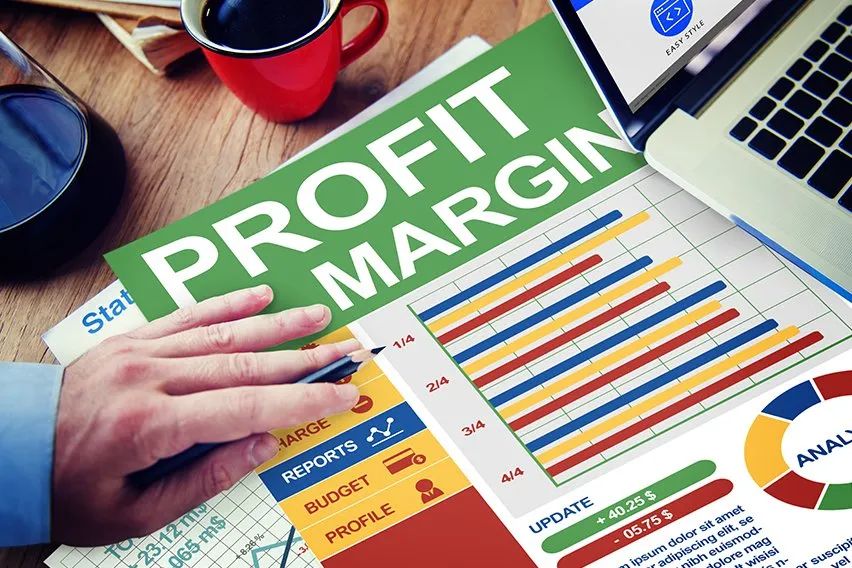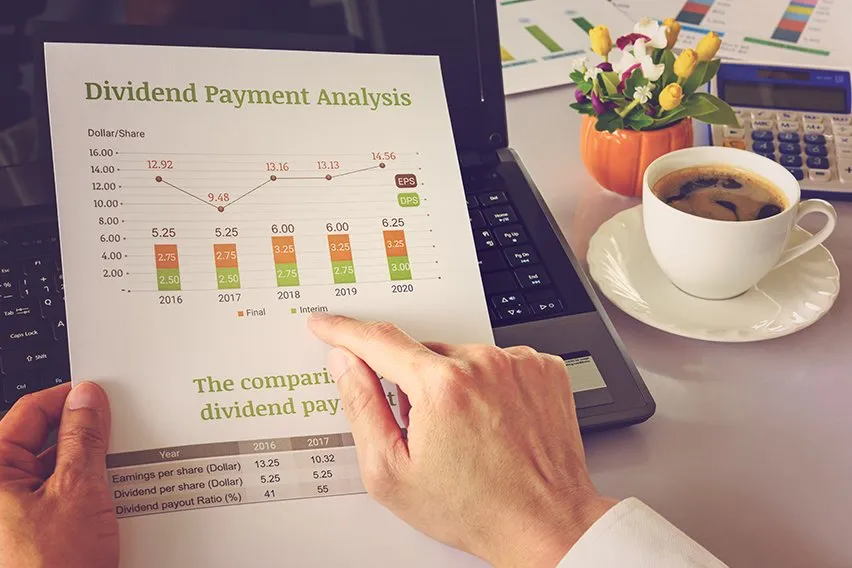How to Calculate Profit Margin: A Small Business Guide

Most people know what profit is, but they don’t really understand how to calculate it. Fortunately, that doesn’t stop them from guessing and then arguing about whether they are making money or not. Profit margin is an important indicator of financial health.
The problem is that those guesses can lead to inaccurate conclusions and poor decision-making. The more you understand the basics of profit margin calculations, the better off you will be as a business owner or manager. You may think your company has low overhead because of all the freebies you get from suppliers. If your gross profits are only 4% then there might be something wrong with your pricing strategy. This article will discuss the ins and outs of profit margin, how to calculate it and much more.
Here’s What We’ll Cover:
What’s a Good Profit Margin for a Small Business?
Is Margin the Same as Gross Profit?
What Are Other Profit Margin Metrics?
Strategies to Increase Your Profit Margins
What Is Profit Margin?
Profit is the money you keep after all business expenses have been paid. Profit margin is a percentage that shows how much profit you made for each dollar of sales revenue from a certain period of time.
You can calculate profit margin on your income statement with the following profit margin formula.
Profit Margin Percentage= (Gross Profit ÷ Sales Revenue) x 100
“Gross Profit” is the amount of money you make after deducting the cost of goods sold from your sales revenue. It is also known as “gross margin” or “operating profit”.
In most cases, gross profit is the same as sales minus cost of goods sold. For example, if your company had $300,000 in revenue and $100,000 in cost of goods sold (COGS), then you would have a gross profit of $200,000.
Gross profit is the total amount of money you made after deducting all overhead costs associated with production or service. It is considered to be the first stage towards your company’s earnings. Operating expenses like rent, utilities, insurance, office supplies and salaries also need to be considered.

What’s a Good Profit Margin for a Small Business?
It depends on what type of business you are running and who your competition is. In general, the higher your gross margin, the better you are at controlling production costs and maximizing profitability.
For example, if your product requires a lot of hand labour and materials, you would have a low gross margin. If you invest in innovative new machinery that lowers costs, your profit margin might be healthy even with a low sale price.
The average profit margin in developed countries is somewhere around 8 to 10 percent. When you look at the overall economy, that seems pretty low. Apple sells millions of iPhones and iPads around the world. They earn a very healthy profit margin in the process.
On the other hand, small businesses don’t have economies of scale or scope to work with. They need to be more efficient than big corporations. It can make sense for them to have lower profit margins.
Is Margin the Same as Gross Profit?
No, this is a common mistake. It’s easy to be confused. The terms “gross profit” and “margin” are often thrown around interchangeably. However, there is a subtle yet very important difference between gross margin and profit margin.
Gross margin is the same as profit margin, but only if you have no other expenses. The term “gross” refers to all costs associated with production or service. For example, if your product costs $10 to make and you sell it for $15, then your gross margin is 50%.
When thinking about gross margins, you are looking at the total revenue dollars and cost associated with production or service, not after expenses have been deducted. The term “margin” is used to refer to what is left over once all expenses are accounted for.
What Are Other Profit Margin Metrics?
There are also other ways to measure profit margin, such as by product line or geographic region. For example, you could compare your gross margin percentage to that of your competitors. You can also track individual products over time and compare their performance to others in the same category.
Profit margin is one of the most important metrics that a company can study and review for better decision making. Since it concerns all aspects of your business, you need as much information as possible before making decisions.

Strategies to Increase Your Profit Margins
A great business strategy to increase your profit margin is to keep a close eye on expenses. It’s not enough just to find savings here and there. You also need to take a look at the big picture and determine where you can reduce costs while improving efficiency, productivity and customer satisfaction.
Another option is to identify products or services that are less profitable and focus more on the moneymakers. For example, you could lower prices for slow-selling items that aren’t bringing in as much cash as one of your top sellers.
Finally, consider whether some of your expenditures are actually unnecessary overhead. Ask yourself if they are adding any value to the business. This is where outsourcing comes into play. For example, do you need a full-time accountant if you’re only working on one project at the moment? Can a accounting software fulfil your needs?
In the end, most companies have another important tool for increasing their profit margins. This is pricing. If your company is competitive in terms of service and quality but has a lower price point than most of your competitors, then that is the area where you need to maximize your return.
There are many other factors that can affect profit margins. It’s always best to start with the basics. Increase revenue and lower costs in all areas of your business. Do that and you’ll be well on your way towards achieving better results than ever before!
Key Takeaways
Profit margin is a very important indicator for successful companies. Any company can use this metric to determine what products and services are the most profitable, which areas need improvement and how to increase their bottom line.
In order to understand profit margins better, you should always be aware of all factors that have an effect on your financial status. That includes your revenue, expenses and level of competition. It’s also important to look beyond short-term changes in the market and make decisions based on what is best for the company as a whole.
Having a solid understanding of how to calculate profit margin will help you make informed choices that lead to greater success down the road. With the right information, you can turn any kind of business into a moneymaker! Hopefully, this article did a good job of explaining profit margins. Take this information and start optimizing your business today!
Did you enjoy reading this guide? Head over to our resource hub for more content!
RELATED ARTICLES

 What Is the Profitability Index? Definition & Calculation
What Is the Profitability Index? Definition & Calculation What Is an Asset? Definition & Types
What Is an Asset? Definition & Types What Is a Debenture? Definition & Purpose
What Is a Debenture? Definition & Purpose What Is Cash Flow? Definition, Importance & Examples
What Is Cash Flow? Definition, Importance & Examples Running a Company: What Is a Confirmation Statement CS01?
Running a Company: What Is a Confirmation Statement CS01? Dividend Payout Ratio: Definition, Formula & Calculation
Dividend Payout Ratio: Definition, Formula & Calculation